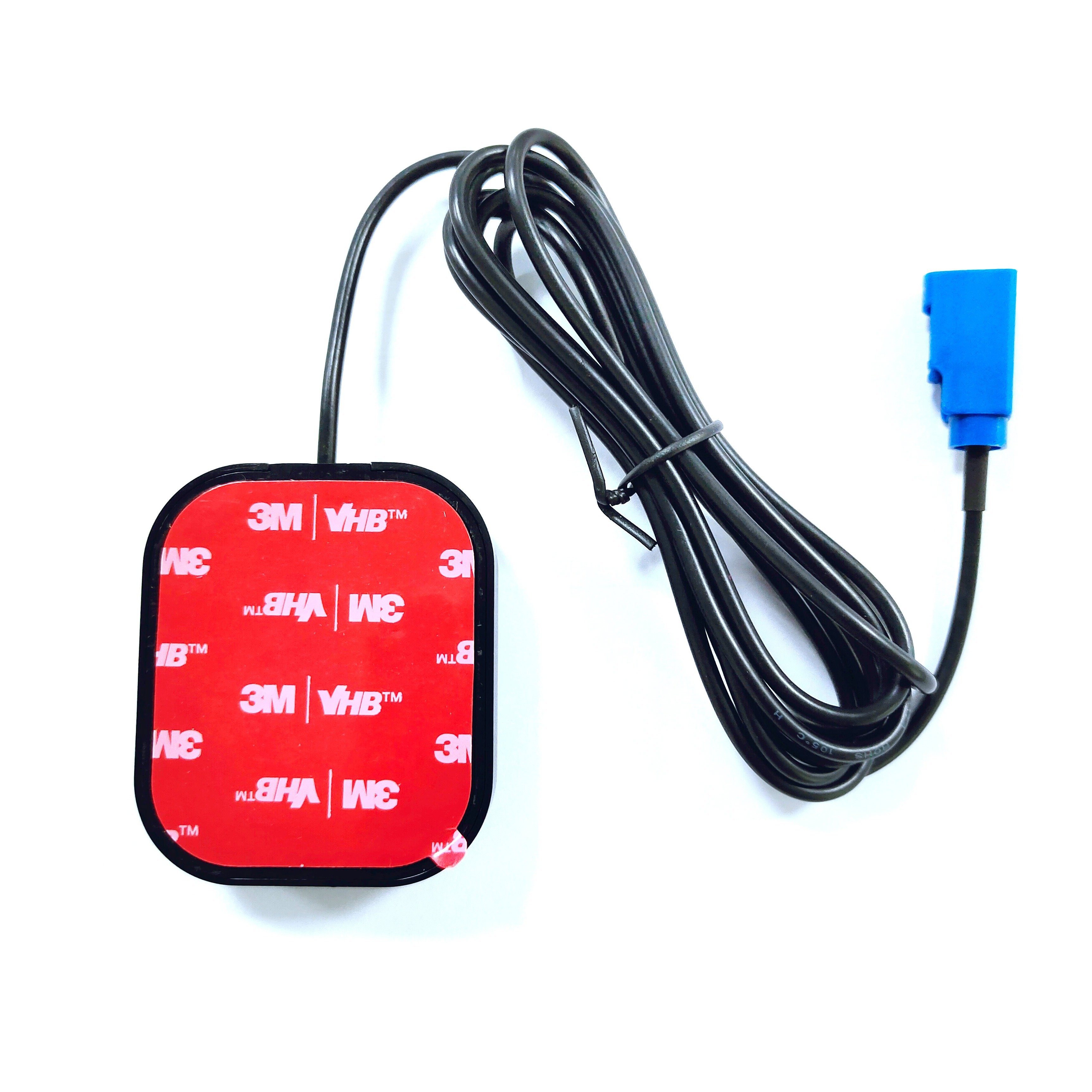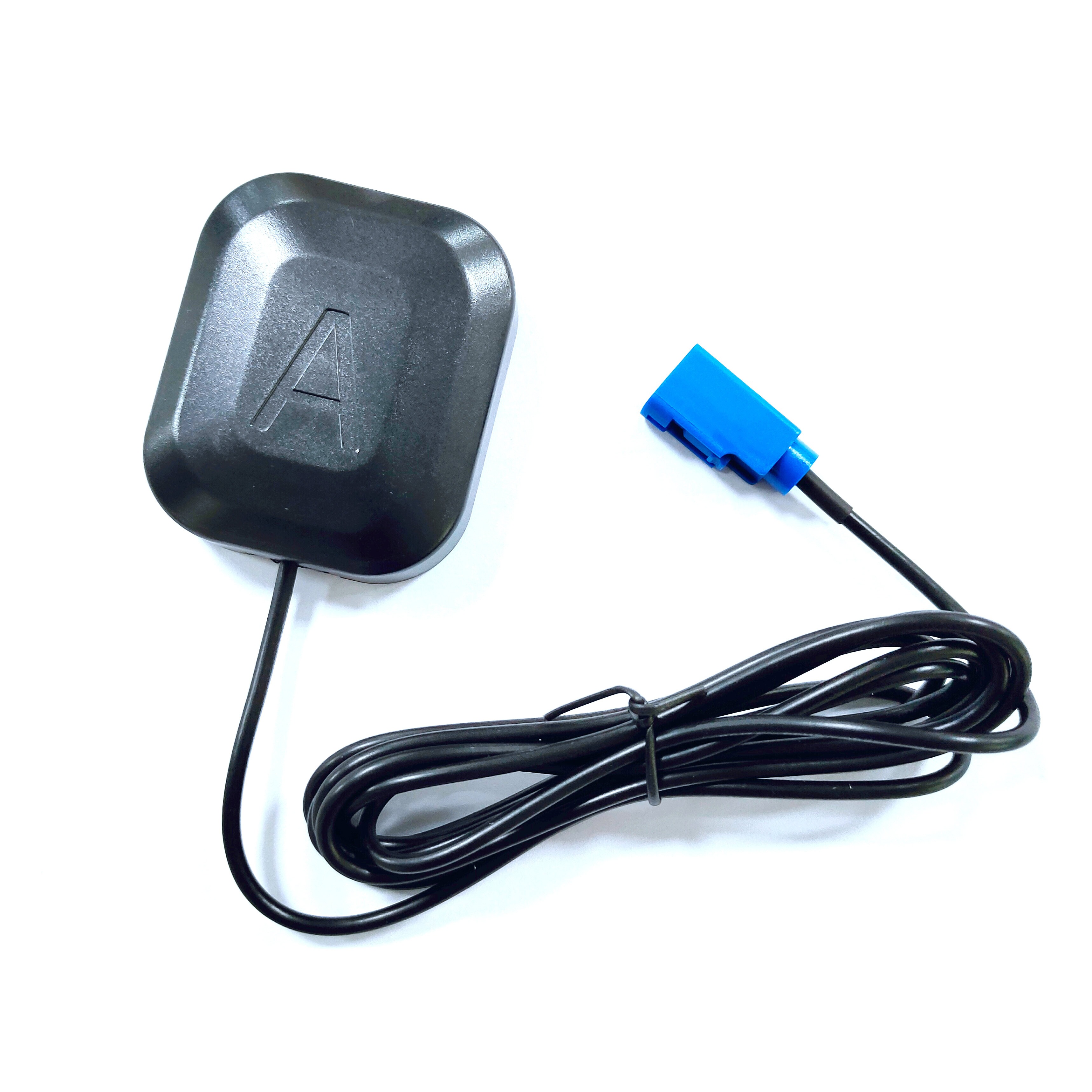defining feature of GNSS RTK car antennas
A defining feature of GNSS RTK car antennas is their form factor and mounting flexibility, tailored to integrate seamlessly with various vehicle types—from compact cars to commercial trucks. These antennas are typically low-profile, with heights ranging from 10mm to 30mm, allowing them to be mounted on the roof, trunk, or dashboard without obstructing the driver’s view or creating aerodynamic drag. Roof mounting is preferred for optimal sky visibility, as it minimizes signal blockage from the vehicle’s metal body, which can attenuate GNSS signals by 20 dB or more. To ensure secure attachment, antennas use robust mounting mechanisms such as adhesive pads, magnetic bases, or screw mounts. Adhesive pads offer quick installation and are ideal for rental or leased vehicles where permanent modification is undesirable, while magnetic bases provide strong holding force (often up to 5 kg) for temporary mounting on metal surfaces. Screw mounts, though more permanent, offer the highest stability, critical for high-speed vehicles where vibration could displace the antenna and disrupt signal reception. The compact design also allows for integration into OEM (Original Equipment Manufacturer) systems, where antennas are embedded into the vehicle’s roof rail or windshield, combining functionality with aesthetics.
The material composition of GNSS RTK car antennas is carefully selected to balance durability, signal transparency, and EMI resistance. The outer housing is typically made from UV-resistant ABS or polycarbonate, materials that withstand prolonged exposure to sunlight, rain, and temperature extremes—from -40°C in cold climates to +85°C in desert conditions. These materials are also non-conductive, ensuring they do not interfere with RF signals. Beneath the housing, the antenna’s radiating element is often a ceramic patch, chosen for its high dielectric constant (εr = 20–40) which enables miniaturization while maintaining resonance at GNSS frequencies. The ceramic patch is mounted on a PCB that integrates a low-noise amplifier (LNA), bandpass filters, and a ground plane. The ground plane, usually a copper layer, serves dual purposes: it enhances the antenna’s radiation pattern by reflecting signals upward and shields the sensitive electronics from EMI generated by the vehicle’s engine, alternator, and infotainment systems. Some advanced designs include a ferrite layer between the PCB and housing to further suppress EMI, reducing noise floor by up to 10 dB in high-interference environments.
Polarization is a critical design consideration for GNSS RTK car antennas, with RHCP (Right-Hand Circular Polarization) being the standard choice. Vehicle motion—including pitching, rolling, and yawing—causes constant changes in the antenna’s orientation relative to satellites. RHCP ensures that the antenna can receive signals regardless of this motion, as circularly polarized signals rotate in a helical pattern that matches the antenna’s polarization. This is in contrast to linear polarization, which would suffer significant signal loss (up to 20 dB) when the antenna tilts even slightly. RHCP also mitigates multipath interference, a major source of error in automotive environments. Multipath occurs when GNSS signals reflect off buildings, road surfaces, or the vehicle’s own body, creating delayed signals that corrupt the receiver’s measurements. Since reflected signals often have reversed polarization, RHCP antennas reject most cross-polarized multipath signals, reducing positioning errors by 50% or more in urban canyons. This capability is essential for RTK systems, where multipath-induced errors could otherwise degrade accuracy from centimeters to meters.
The frequency coverage of GNSS RTK car antennas is designed to support multiple satellite constellations and bands, ensuring robust positioning even in challenging conditions. These antennas typically cover GPS L1/L2, GLONASS G1/G2, BeiDou B1/B2, and Galileo E1/E5b, leveraging the redundancy of multi-constellation reception to maintain lock when individual satellites are obstructed. Dual-band support (e.g., L1 and L2) is particularly critical for RTK, as it enables ionospheric delay correction. The ionosphere introduces frequency-dependent delays that can vary by up to 50 meters, but by measuring signals at two frequencies, the receiver can model and cancel these delays, a process that improves accuracy by a factor of 10 in ionospherically active regions. Some antennas also include 4G LTE or 5G bands (e.g., 600 MHz–6 GHz) to enable simultaneous communication, allowing the vehicle to receive RTK correction data via cellular networks. This integration eliminates the need for a separate communication antenna, reducing installation complexity and cost.
Gain and radiation pattern are optimized to balance signal strength and coverage, addressing the unique challenges of vehicular positioning. GNSS RTK car antennas typically offer a gain of 25–30 dBi, sufficient to amplify weak signals (as low as -160 dBm) received through the vehicle’s roof or windshield. The gain is concentrated in a hemispherical radiation pattern with a beamwidth of 60–90 degrees, ensuring coverage of satellites from the horizon up to the zenith. This pattern is critical for urban driving, where tall buildings restrict the visible sky to a narrow cone. The antenna’s radiation pattern is also engineered to minimize gain in the downward direction, reducing interference from ground-based sources like cellular towers or Wi-Fi routers. To further enhance performance, some antennas use beamforming technology, dynamically adjusting their radiation pattern to focus on satellites with the strongest signals—a feature that improves signal-to-noise ratio (SNR) by 3–5 dB in dense urban environments.
Impedance matching and VSWR
Impedance matching and VSWR are meticulously tuned to ensure efficient signal transfer from the antenna to the receiver. These antennas are designed for 50Ω impedance, matching the standard of automotive RF systems. A VSWR (Voltage Standing Wave Ratio) of ≤2.0 is typical, indicating that over 90% of the received signal power is transferred to the receiver, with minimal reflection. This is achieved through precise design of the ceramic patch dimensions, feed point location, and matching network on the PCB. Poor impedance matching would not only waste signal power but also cause standing waves that generate noise in the LNA, degrading SNR. The matching network includes passive components (capacitors and inductors) that adjust the antenna’s input impedance, ensuring it remains within the 50Ω standard across all operating frequencies and temperatures. This stability is crucial for RTK, as even small impedance variations can introduce phase errors that disrupt carrier phase measurements.
The integrated LNA is a key component of GNSS RTK car antennas, responsible for amplifying weak signals while adding minimal noise. These LNAs feature a noise figure of ≤1.5 dB, ensuring that the SNR of the received signal is preserved. The LNA is positioned close to the ceramic patch to minimize signal loss before amplification—a design known as “front-end amplification” that can improve overall system sensitivity by 10–15 dB. The LNA is also linear over a wide dynamic range, preventing saturation by strong interfering signals (e.g., from nearby radar systems) which could otherwise block GNSS reception. To withstand automotive voltage fluctuations, the LNA is powered by a regulated 3.3V or 5V supply, with overvoltage protection that shields it from spikes caused by the vehicle’s alternator. This robust power management ensures stable performance even when the vehicle’s battery voltage varies between 9V and 16V.
Cable and connector design are critical for maintaining signal integrity between the antenna and the vehicle’s RTK receiver. The cable is typically a low-loss coaxial type (e.g., RG-174 or LMR-100) with a diameter of 1.5–3mm, chosen for its flexibility and resistance to EMI. Cable lengths range from 1m to 5m, long enough to route from the roof to the receiver (often located in the dashboard or trunk) without excessive slack. The cable is terminated with a rugged connector such as SMA, TNC, or FAKRA—automotive-grade connectors that provide a secure, weatherproof seal. FAKRA connectors are particularly common in OEM systems, as they include keying to prevent incorrect mating and are designed to withstand the vibrations and temperature cycles of automotive use. The connector is crimped or soldered to the cable with precision, ensuring a low-loss connection that maintains the antenna’s VSWR and gain specifications.
Environmental durability is a hallmark of GNSS RTK car antennas, with designs that meet stringent automotive standards such as IP67 (water and dust resistance) and IEC 60068 (temperature and vibration testing). These antennas can withstand exposure to rain, snow, and road salt without performance degradation, thanks to sealed housings and corrosion-resistant materials. Vibration testing ensures that components remain securely attached even when subjected to the 10–2000 Hz vibrations common in vehicles. Temperature cycling tests (-40°C to +85°C) verify that the antenna’s performance—including gain, VSWR, and LNA noise figure—remains within specifications across the entire operating range. For example, the ceramic patch’s dielectric constant changes slightly with temperature, but the matching network is designed to compensate for these changes, ensuring consistent impedance.
driving applications
In ADAS and autonomous driving applications, GNSS RTK car antennas provide the precise positioning required for functions like lane centering, adaptive cruise control, and automated lane changes. These systems demand accuracy of 10 cm or better to ensure safe operation, a requirement that can only be met with RTK. The antenna’s ability to maintain lock during rapid vehicle motion—including high speeds (up to 130 km/h) and sharp turns—ensures continuous availability of RTK corrections. For platooning applications, where trucks travel in close formation, RTK positioning with centimeter-level accuracy enables safe spacing (as little as 5–10 meters) between vehicles, improving fuel efficiency and road capacity.
Fleet management and logistics benefit from GNSS RTK car antennas by enabling precise tracking of vehicles, trailers, and cargo. Logistics companies use RTK data to optimize routes, monitor driver behavior (e.g., harsh braking or acceleration), and ensure on-time deliveries. The antenna’s 4G LTE integration allows for real-time data transmission, providing fleet managers with up-to-date information on vehicle locations and status. In urban delivery scenarios, RTK accuracy helps drivers navigate to exact loading/unloading points, reducing time spent searching for addresses. For cold-chain logistics, the antenna’s durability in extreme temperatures ensures reliable tracking of refrigerated trucks, even in freezing or desert conditions.
Challenges and mitigation strategies are integral to the design of GNSS RTK car antennas. One major challenge is signal blockage by tall buildings, tunnels, or tree canopies, which can cause temporary loss of RTK lock. To address this, antennas are often paired with inertial measurement units (IMUs) that extrapolate position using accelerometer and gyroscope data during signal outages. This fusion of GNSS and IMU data ensures continuous positioning with accuracy better than 1 meter for up to 30 seconds without satellite signals. Another challenge is EMI from the vehicle’s own electronics, which can corrupt GNSS signals. Manufacturers mitigate this by using shielded cables, ferrite chokes, and low-EMI LNAs, as well as by optimizing the antenna’s ground plane to block noise from the vehicle’s body.
Future trends in GNSS RTK car antennas
-
Future trends in GNSS RTK car antennas include the integration of 5G and satellite communication for enhanced correction data delivery, as well as the adoption of multi-constellation, multi-frequency designs to improve resilience in challenging environments. Advances in materials science may lead to even more compact antennas with higher gain, while AI-driven beamforming could further optimize radiation patterns in real time. As autonomous driving technology matures, the demand for GNSS RTK car antennas with sub-centimeter accuracy and 99.99% availability will continue to grow, driving innovation in design and performance.
In conclusion, GNSS RTK car antennas are specialized components that combine advanced materials, precise engineering, and automotive-specific design to deliver centimeter-level positioning in dynamic vehicular environments. Their low-profile form factor, RHCP polarization, multi-band support, and robust construction make them indispensable for ADAS, autonomous driving, and fleet management. By addressing challenges like signal blockage, EMI, and motion-induced errors, these antennas ensure reliable RTK performance, enabling safer, more efficient, and more connected transportation systems. As automotive technology advances, the role of GNSS RTK car antennas will only become more critical, serving as the “eyes” that guide vehicles with unprecedented precision.




































































 Language
Language
 En
En Cn
Cn Korean
Korean

 Home >
Home > 






 18665803017 (Macro)
18665803017 (Macro)













